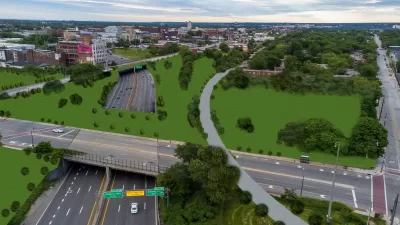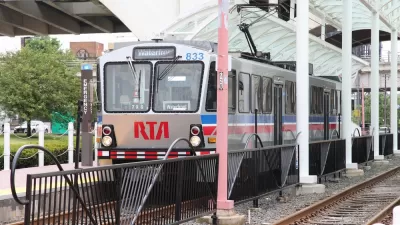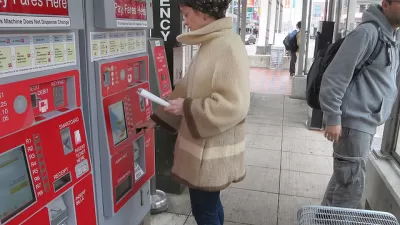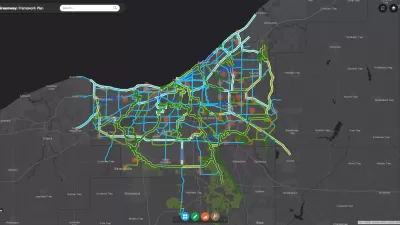A proposal to cap part of the Innerbelt Freeway east of Downtown Cleveland would require the demolition of a vacant, historic courthouse near the East 22nd Street Bridge.

Steven Litt reports for Cleveland.com on an ambitious proposal for the demolition of the Cuyahoga County Juvenile Court Building, a vacant county landmark built in 1931, to create space for a freeway cap project called “Reconnect Cleveland.” The Campus District Inc. is proposing the demolition and cap project in response to a request for proposals (RFP) from Cuyahoga County for the redevelopment of the historic courthouse
“The nonprofit wants to see the old courthouse demolished in order to make room for a green, aesthetically pleasing deck, or ‘cap,’ over the Innerbelt freeway trench next to the East 22nd Street Bridge, plus new development that could occur on part of the land where the courthouse now stands,” writes Litt.
“The cap would be big enough to carry a future regional bike path that would link Slavic Village to downtown, the lakefront, the Towpath Trail, and the Cuyahoga Valley,” explains Litt of the benefits touted in the Campus District’s documents presented in response to the RFP.
The Campus District is a community development corporation covering a swath of neighborhoods east of downtown Cleveland, including Cleveland State University, the Metro Campus of Cuyahoga Community College, and St. Vincent Charity Hospital.
According to Litt, the proposal already has strong support from political leadership and local organizations. The proposal has special urgency as the Ohio Department of Transportation plans the next stage of the Innerbelt Modernization Plan, which Litt describes as a “multi-decade project to revamp the Innerbelt, the eight-mile collection of freeway lanes converging on the west, south and east sides of downtown to link interstates 71, 77, and 90.”
FULL STORY: Nonprofit Campus District proposes removing old Juvenile Court to cap Innerbelt with green park

Study: Maui’s Plan to Convert Vacation Rentals to Long-Term Housing Could Cause Nearly $1 Billion Economic Loss
The plan would reduce visitor accommodation by 25,% resulting in 1,900 jobs lost.

North Texas Transit Leaders Tout Benefits of TOD for Growing Region
At a summit focused on transit-oriented development, policymakers discussed how North Texas’ expanded light rail system can serve as a tool for economic growth.

Why Should We Subsidize Public Transportation?
Many public transit agencies face financial stress due to rising costs, declining fare revenue, and declining subsidies. Transit advocates must provide a strong business case for increasing public transit funding.

How to Make US Trains Faster
Changes to boarding platforms and a switch to electric trains could improve U.S. passenger rail service without the added cost of high-speed rail.

Columbia’s Revitalized ‘Loop’ Is a Hub for Local Entrepreneurs
A focus on small businesses is helping a commercial corridor in Columbia, Missouri thrive.

Invasive Insect Threatens Minnesota’s Ash Forests
The Emerald Ash Borer is a rapidly spreading invasive pest threatening Minnesota’s ash trees, and homeowners are encouraged to plant diverse replacement species, avoid moving ash firewood, and monitor for signs of infestation.
Urban Design for Planners 1: Software Tools
This six-course series explores essential urban design concepts using open source software and equips planners with the tools they need to participate fully in the urban design process.
Planning for Universal Design
Learn the tools for implementing Universal Design in planning regulations.
City of Santa Clarita
Ascent Environmental
Institute for Housing and Urban Development Studies (IHS)
City of Grandview
Harvard GSD Executive Education
Toledo-Lucas County Plan Commissions
Salt Lake City
NYU Wagner Graduate School of Public Service





























